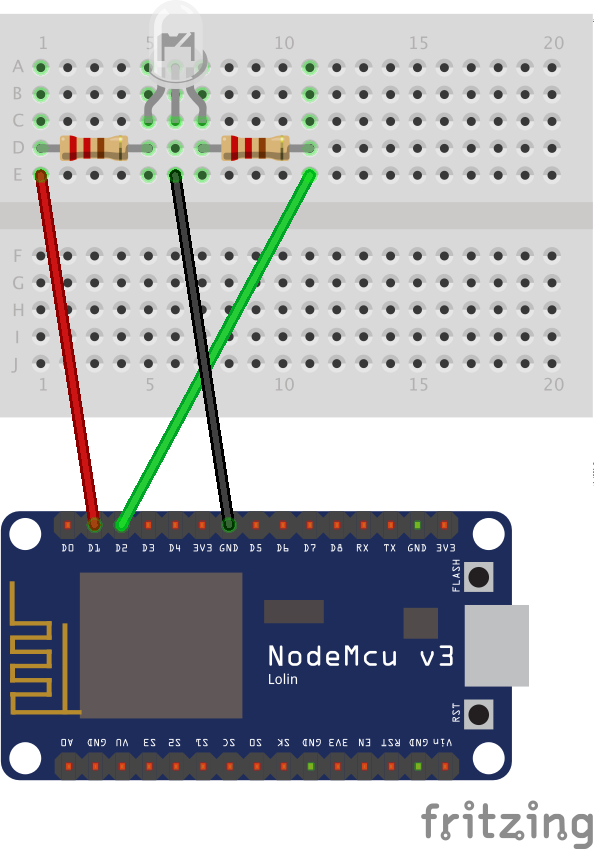This is a quick example on how to use a bicolour LED with a NodeMCU.
The bicolour LED has both red and green LEDs in a single package. There is a common cathode for both the red and green anodes. Applying a current to the red anode turns the red LED on. A current to green anode turns the green LED on. A current to both anodes creates yellow.
The circuit is very simple. We wire the red anode to D1 on the NodeMCU, the green anode to D2, protecting them both with a 220ohm resistor. The cathode is wired to ground.

We program the NodeMCU using an Arduino sketch.
int redPin = D1, greenPin = D2;
void setup() {
// set the pins to output mode
pinMode(redPin, OUTPUT);
pinMode(greenPin, OUTPUT);
}
void loop() {
// red
digitalWrite(redPin, HIGH); delay(500);
// yellow
digitalWrite(greenPin, HIGH); delay(500);
// green
digitalWrite(redPin, LOW); delay(500);
// off
digitalWrite(greenPin, LOW); delay(500);
}
In the setup, we set D1 and D2 to both be outputs. We then turn D1 and D2 on and off in sequence every half a second to achieve a sequence of red, yellow, green, and off.

